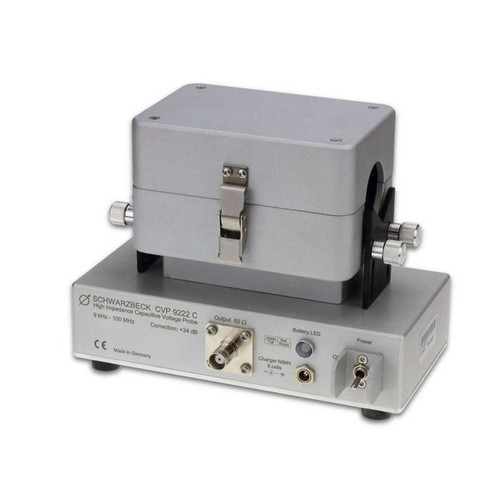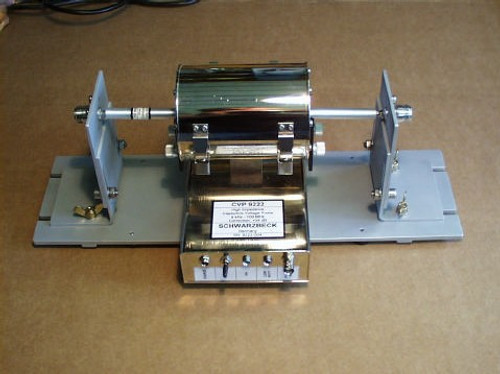Overview

APPLICATION
The voltage probe is preferred for applications in which the use of LISNs is difficult or even impossible due to high current consumption of the EuT. 30dB have to be added to the EMI receiver reading in dB over 1µV across 50 W to obtain the rf-voltage at the probe tip in the main frequency range 20 kHz to 30 MHz (across 1.5 kW //4pF). With lower frequencies (approx. 20 kHz down) use the diagram value above instead of 30 dB to correct for the voltage division of the coupling capacitor.
For function checks of the probe with sine wave signal generators be aware of the output voltage calibration reference with the usual 50 W load. Either connect a small carbon resistor of 50 W in parallel to the probe; otherwise almost 6 dB higher reading (twice the indic. generator voltage) will be observed. The probe is not shielded to keep the input load capacitance down to only 4 pF. In the presence of strong E fields it might be necessary to slide a metal tube or a copper foil over the probe body and connect it to ground.
The divider (option) can be used to determine the approximate RF-Impedance of unknown EuTs according to CISPR 16-2. Two measurements are required to estimate the Impedance, one without divider and one with the voltage probe and divider. The dBdifference of both readings is used to determine the EuT-Impedance out of the diagram. The method should be regarded as an estimation only. The uncertainty increases for frequencies above 10 MHz.
Example: The reading with voltage probe only was 60 dBµV. Using the divider a reading of 55 dBµV was achieved. The difference (indication change) is 5 dB. The corresponding Impedance value in the diagram is 400 W. In this case the measurement error is 2 dB.
WARNING
This probe must be used by qualified personnel only. Check if local warnings exist. The connection to the DuT terminals must be made before the high voltage is applied. After turn-on the body of the probe must not be touched (in spite of the insulating tube). The test receiver is usually grounded via the protection earth conductor, so the ground terminal of the probe is also at ground potential. At R. F. the ground connection must be short and near the "hot" terminal. The relevant safety standards for working with high voltage must be taken into account!
| Schwarzbeck TK 9420 Specifications | ||
| Input Impedance | 1.5 kΩ || 4 pF | |
| Frequency Range | 9 kHz - 30 MHz | |
| Voltage Range | HF: AC 50/60 Hz: < 2.5 kV DC: < 4.4 kV |
|
| Freq. Range w. constant Correction of 30 dB | 20 kHz - 30 MHz | |
| Accuracy of Voltage Division | 30 kHz - 30 MHz +/- 0.5 dB | |
| Input Impedance of Test Receiver | 50 Ω, SWR ≤ 1.1 | |
| Internal Coupling Capacitor | 10 nF | |
| Terminals | 4 mm | |
| Ground Connection | insulated litz wire, Banana plug 4 mm | |
| Coax Cable | RG 58, 2 m, BNC | |
| Audio Frequency Impedance | 10 nF + 1.5 kΩ | |
| Weight | 180 g | |
| Dimensions | 175 mm x 23 mm ∅ | |







